Hanging By a Thread: The 200-year-old craft of weaving handloom carpets, called jamakkalams, faces extinction in Tamil Nadu
The jamakkalams or handloom mats of Bhavani in Erode district, Tamil Nadu, got a GI tag in 2005-2006, but the powerloom has rung a death knell for the weavers. A centuries- old craft is on its way out.


Photo: C Saravanan
Erode, Tamil Nadu
It is nearing lunch time. The smell of rasam bubbling, followed by the hiss of spluttering mustard seeds hitting it, is probably why K Vadivel and M Selvaraj smile happily. The two bare bodied men, childhood friends, and now 65 and 63-years old respectively, are seated in a courtyard packed with mud, their feet reaching down into a pit where, firmly entrenched in the ground is the foundation of the wooden loom they are working on. The looms are usually made of wood from the Vellavelam (a variety of the acacia) and teak.
They are weaving a jamakkalam (a sturdy cotton carpet) on a wide loom, nearly 14 feet in breadth. The carpet is going to have the name of its future owner woven into it in Hindi. The name ‘Sukhdev Manik’, followed by details of his date of birth perhaps, in Devnagri script, is written on a crumpled yellow paper that Vadivel has carefully balanced in front of him.
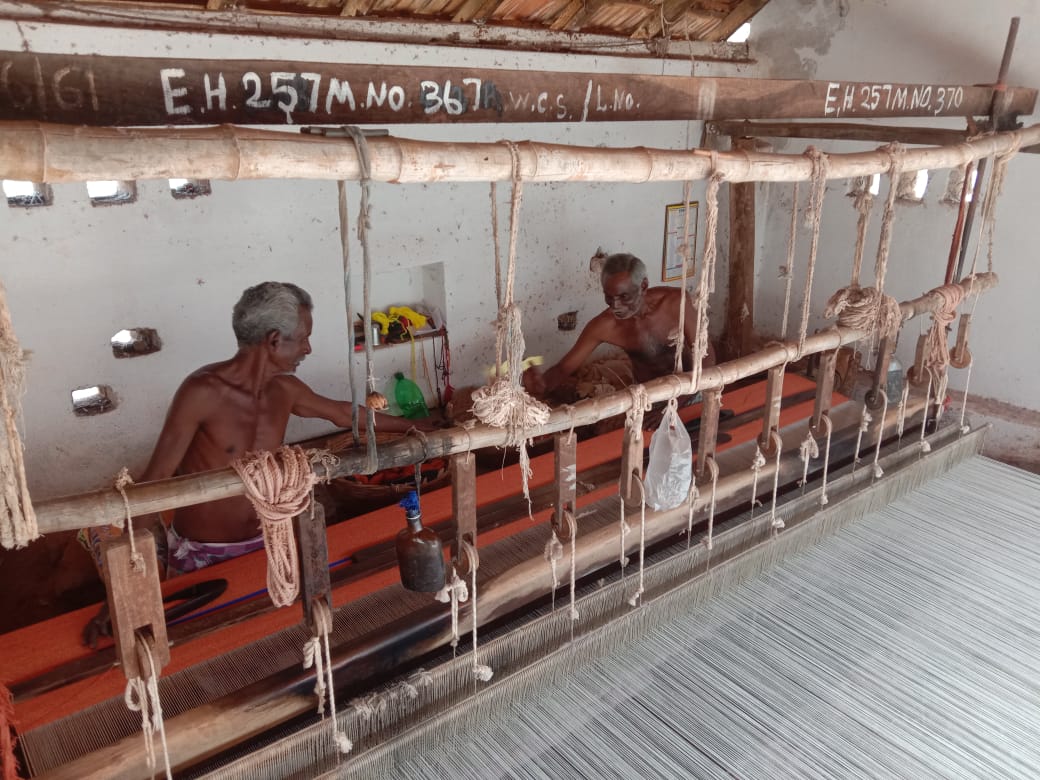
“We do not know how to read or write any language, let alone Hindi,” laughs Vadivel as without missing a beat, he moves his feet up and down, perfectly synchronised with the feet of Selvaraj. Their hands pass the weft shuttle to and fro, and every now and then, one of them reaches out to adjust the tension of the yarns, strung on the loom with impossible intricacy. A bottle with oil to lubricate the moving parts of the loom, also hangs alongside the yarns.
With each set of movements of their limbs, the name gradually appears on the orange mat. The letters are a perfect replica of what is written on that scrap of paper. Such is their skill passed on from generations of weavers of Periamolapalayam, in Bhavani block, Erode district in Tamil Nadu, 400 kilometres from Chennai, the state capital.
Also Read: A village that thrived on handloom, Cooch Behar’s Baburhat now has only one handloom mill

Bhavani is located at the confluence of the Bhavani, Kaveri and the invisible Amirtha rivers, and its colourful striped jamakkalam received the Geographical Indication (GI) tag in 2005-2006. Jamkkalams in this region have been woven for more than 200 years. But the craft is dying a slow death.
Over five years back, in 2015, there were approximately 120 weavers and 40 looms in Periamolapalayam village. Today there are roughly 60 weavers working on 25 looms. Most of the weavers are over 50 years of age.
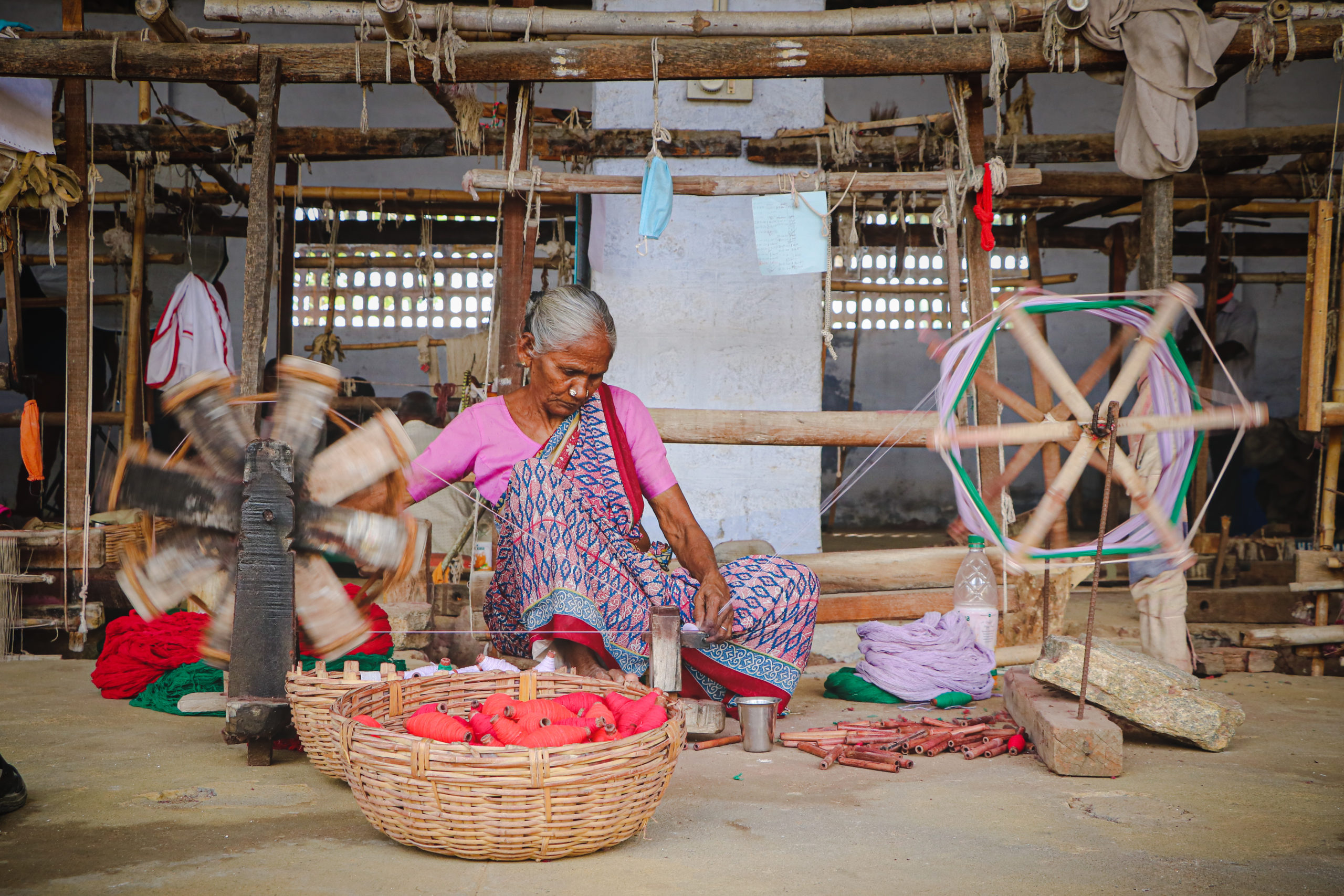
Widespread
There was a time when the jamakkalam was a part and parcel of Tamil households, rich or poor. They were specially ordered for weddings with the names of the bride and groom woven into them.
During festivals, they were spread out to accommodate guests. People sat on them to eat the wedding feasts served to them on banana leaves. In all marriage functions, the auspicious paraphernalia of sweets, fruits and flowers were lovingly arranged on the jamakkalam. The striped cotton mats served equally well for the paatu classes (music classes) as they did for quick afternoon naps.
Also Read: These weavers of Jammu want to revive the culture of age-old textile art
But no one sits or sleeps on the jamakkalam anymore, rued A Raju, a weaver in Periamolapalayam. “There was a time more than a thousand jamakaalams went out in a week from our village alone. Now, we are lucky if we can send out a hundred a month,” he told Gaon Connection.
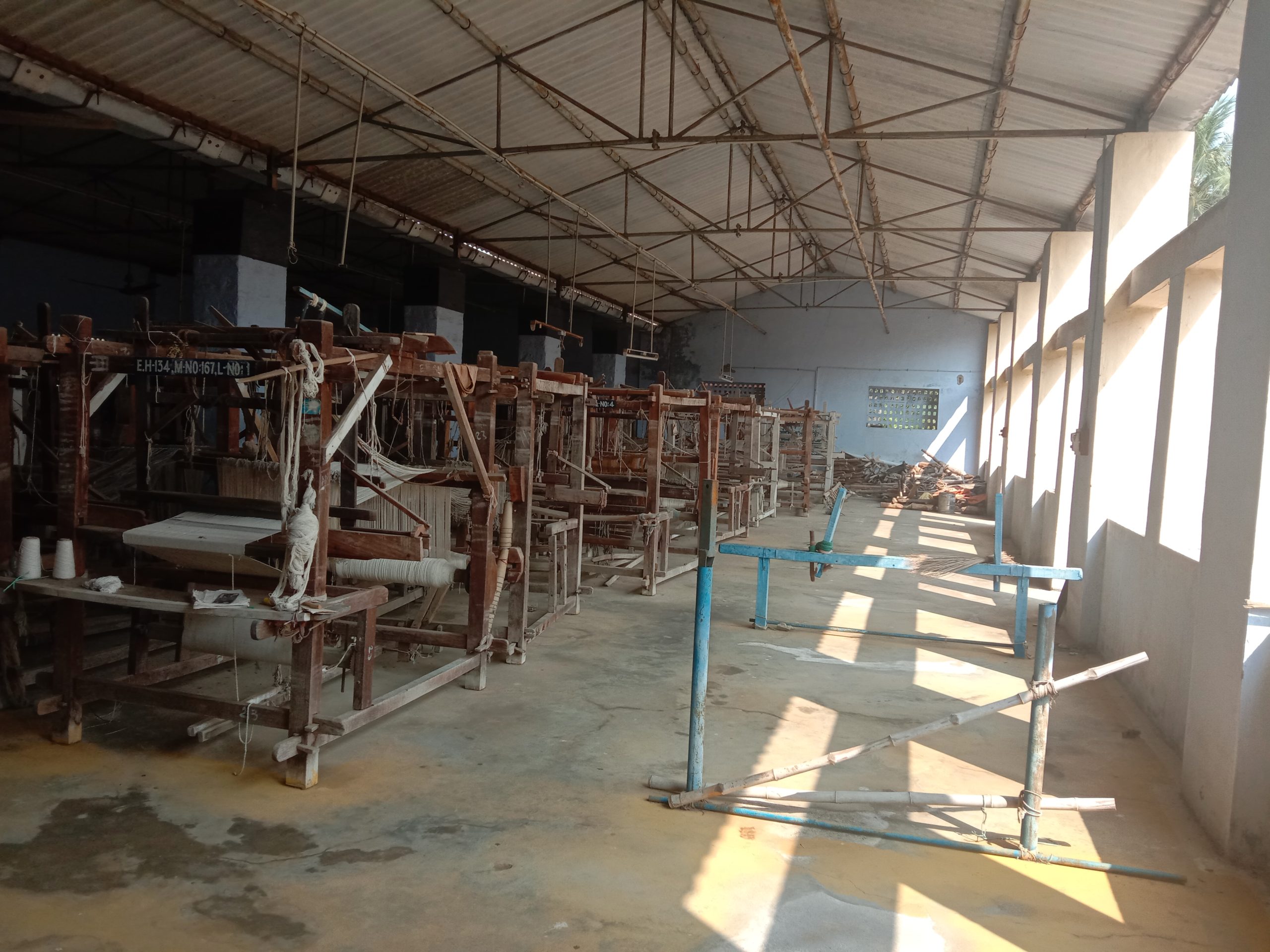
Bhavani jamakaalams had a huge market in Odisha, Karnataka, Maharashtra and Andhra Pradesh. It still sends some to the Gulf countries where they are often used as prayer mats.
“We sent our jamakaalams to these states in trucks, by rail or even by post. But that has come down with the cheaper alternatives powerlooms offering,” said Shakthivel.
The advent of the powerlooms in early 2000, foreshadowed the decline of the handloom jamakkalam. The Handlooms (Reservation of Articles for Pproduction) Act, 1985, prohibits powerlooms from producing a long list of articles exclusively reserved for handlooms. The Bhavani jamakkalam was one of those. Yet, powerlooms function with impunity, and more and more handloom weavers are leaving to work in factories, or even as domestic help and cooks, as the future of their traditional craft is getting bleaker by the day. The GST [Goods and Services Tax] they have to pay on the yarn has made even more difficult for them, complain the weavers.

“We cannot compete with the powerlooms that are eating into our income,” said Raju. Powerlooms can turn out three to four times the number of jamakaalams than what a weaver can in a day. “While handloom jamakaalams cost Rs 25 a square feet, powerlooms cost Rs 15 a square feet. And, few people can tell the difference. Why would they pay more for a handloom jamakkalam,” he asked.
Also Read: The Banarasi saree industry is losing about Rs 24 crore/day, nearly six lakh weavers badly hit
“The jamakkalam still breathes, though barely,” an official from the state department of handlooms and textiles, Erode, told Gaon Connection. He admitted that this was perhaps the last generation of handloom weavers we were seeing in Bhavani. “The government offers many schemes, training capsules and monetary incentives. That is the only reason the craft still lives, otherwise it would have disappeared long ago. However, this support is not enough to sustain handloom jamakkalam as the wages are inadequate to keep the weavers going,” he said.
According to figures provided by the department of handloom and textiles, Erode, in 2015-16 there were 3,654 handlooms and 8,231 weavers in Bhavani. In 2020-21, the numbers are 3243 looms with 7368 weavers still working on them. There are 323 powerlooms working in this area.
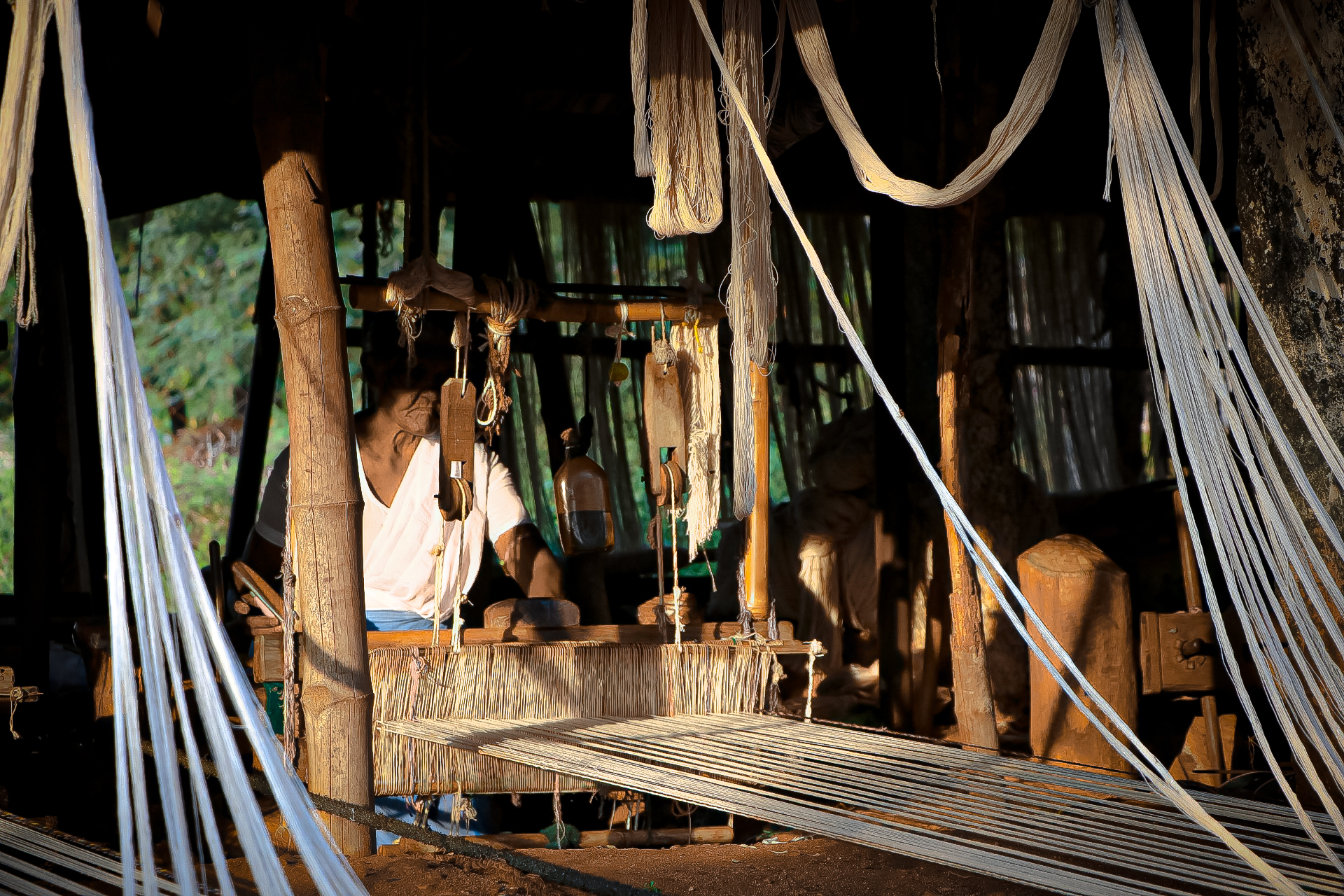
For Rs 126 a day
P Shakthivel of Periamolapalayam village has been weaving the jamakkalam since he was 14 years old. The 64-year-old weaver has acquired a reputation of being highly skilled, innovative and open to adapting new ideas to his craft. Recently, he was approached by Kumaraguru Institutions (that has several colleges under its umbrella across Western Tamil Nadu) to help pull the craft back from extinction.
“There are a few of us left, like Selvaraj, Vadivel and myself,” Shakthivel told Gaon Connection. “The men and women you see weaving here are perhaps the last of the weavers. It will end with us if a concerted effort is not made to save us and our craft,” he said.
“Even the labourers get paid more than us,” muttered A Savithri, who sat on the side winding the weft yarn around the pirn (taar kuchchi) to be inserted in the shuttle that the weavers use. There was a hint of anger in her voice as she continued. “I get paid hundred and twenty six rupees a day for putting in nearly eight hours of work. I could earn more at a construction site. Here I am, a skilled weaver, but struggling to feed my family,” she told Gaon Connection.
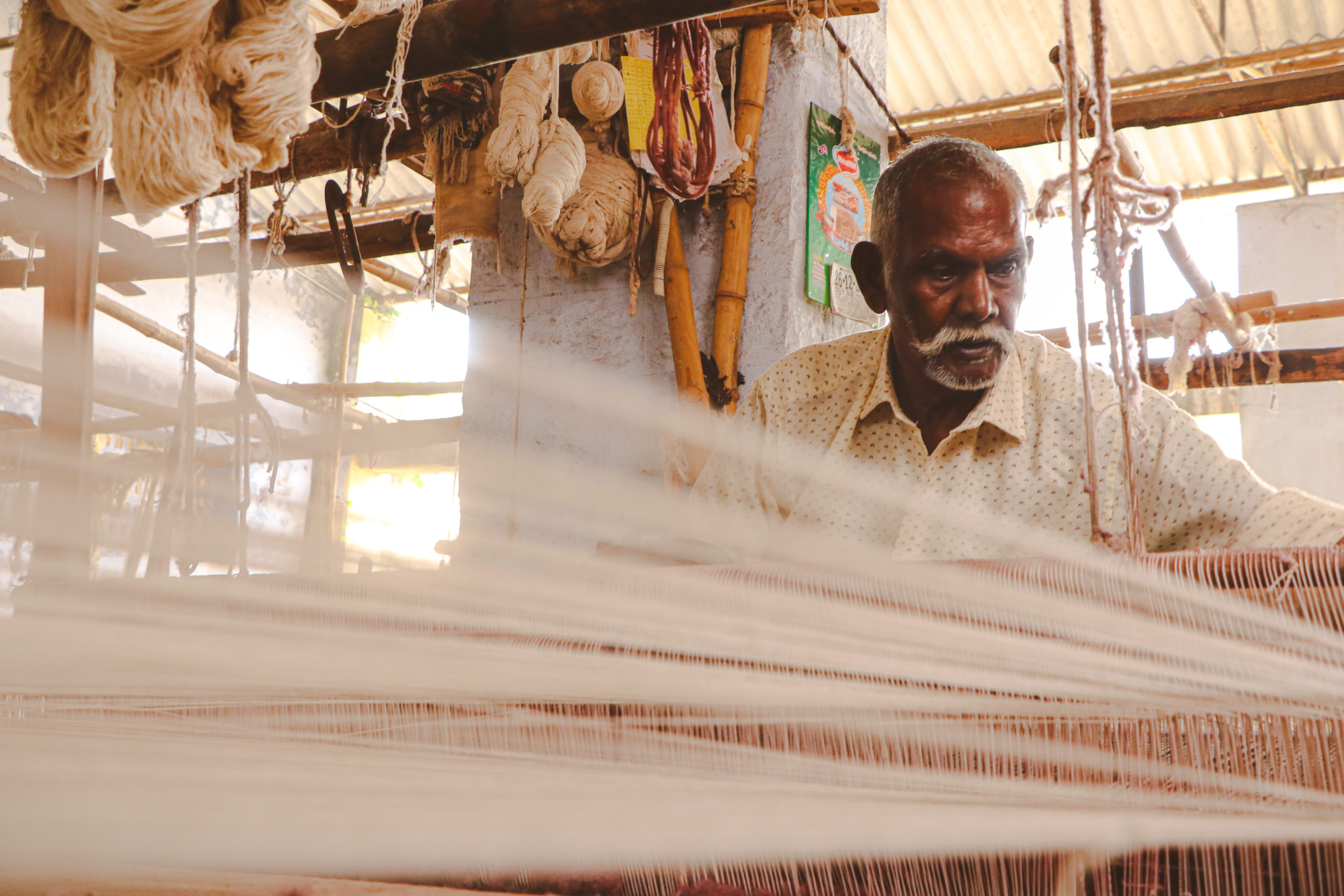
Weavers get paid Rs 250 to Rs 350 on an average depending on how much of the jamakkalam they weave in a day. They get between Rs 19 and Rs 22 per square feet for the traditional multi coloured striped jamakaalams, while something with motifs, borders, etc. earns them a little more.
For generations, jamakaalams have been the sole source of livelihood of weavers in Bhavani. Weaving a jamakaalam requires all family members to work together. Shakthivel sits at the loom alongside his sister Janaki. A little away, his athai (father’s sister), Chellamma, sits at the charkha winding spindles. “Till a few years ago, I also sat at the loom,” she smiled.
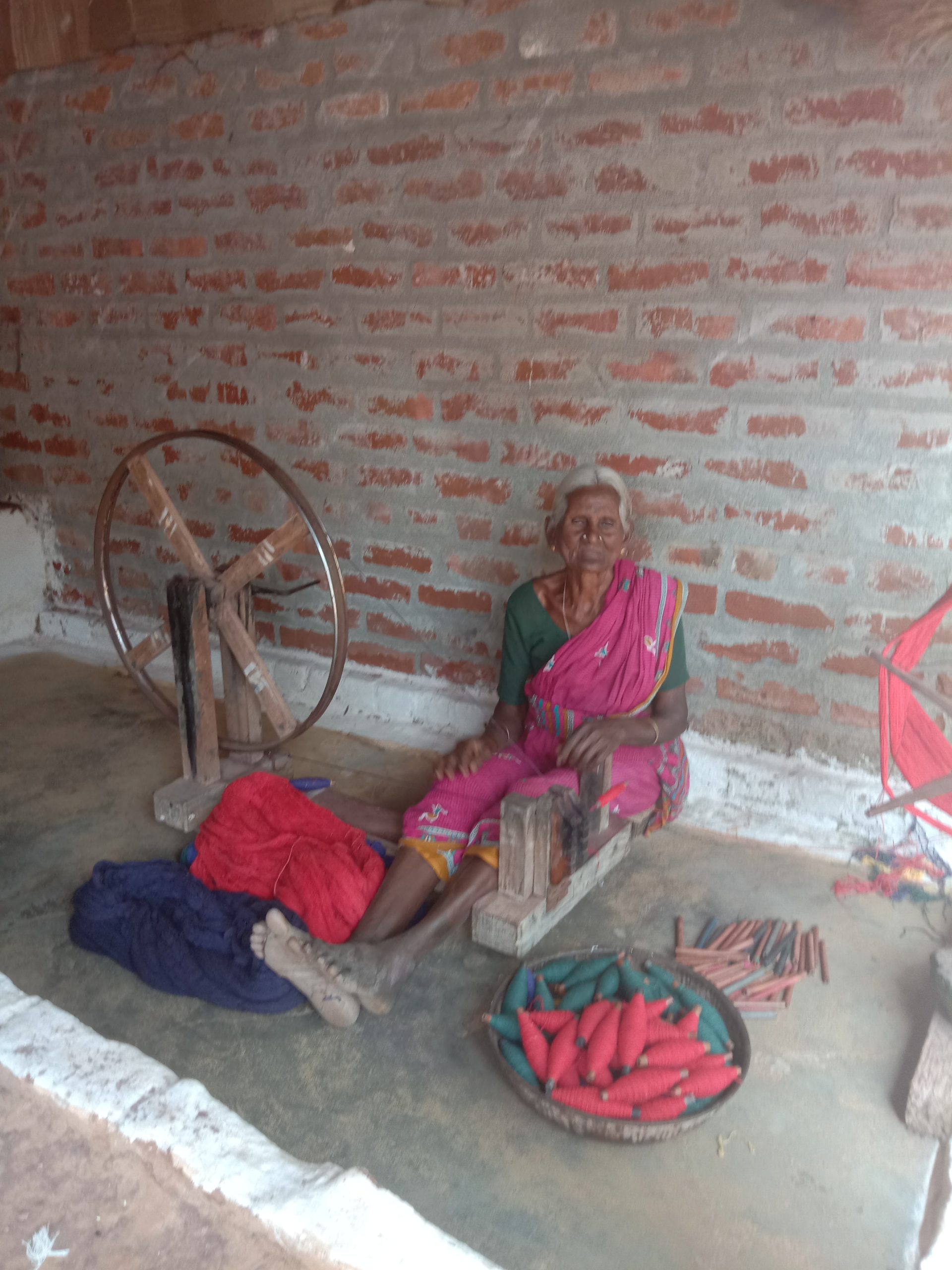
“The families are scattering. By the time my two-year-old daughter grows up, all this will be gone,” Raju, who is also Shakthivel’s nephew, observed sadly. “If there was something to attract young weavers to the looms, they would happily do it. But how can we even ask them to weave when the returns are next to nothing,” the 47-year-old asked.
Reinventing the jamakkalam
However, there is a glimmer of hope as students from the department of fashion technology, textile technology and department of business studies of the Kumaraguru Institutions, have approached the weavers of two villages, Periamolapalayam and Aapakudal in Bhavani block to work on a jamakkalam project with them.
“We will help them with processes, material procurement, design and product innovation, besides marketing,” C Saravanan of Kumaraguru Institutions told Gaon Connection. He, along with B Poongodi, assistant professor, Business Studies and also a researcher on natural fibres and handlooms, and several students, started the project last December. A Centre for Weaving was set up at the weaving village of Aapakudal on January 30, Martyr’s Day. Shakthivel along with other master weavers will train weavers here.
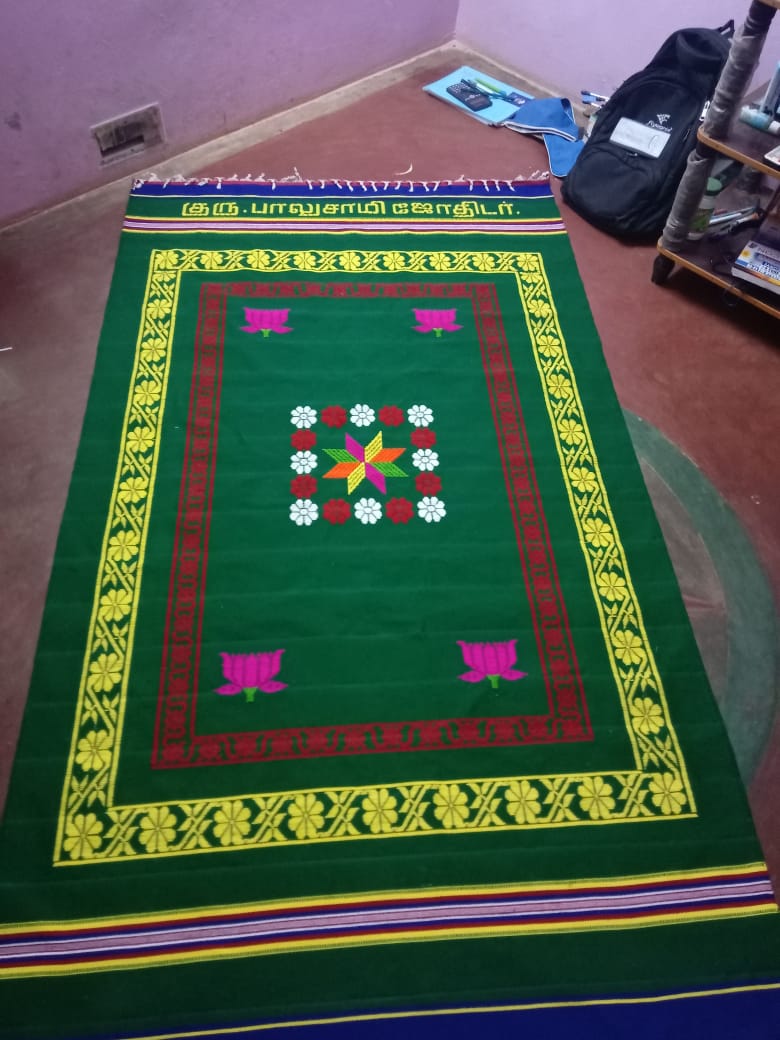
“We have just completed work on a jacquard box that will make the working of the loom much easier,” Pongoodi explained. “The productivity will go up, and the finish will be finer. We want to introduce natural dyes and better quality yarns into the craft,” Poongodi told Gaon Connection. Traditionally, the cotton yarn for the jamakkalams comes from Erode, Karur and Coimbatore and they are dyed at Chennimalai that is about 35 kms away from Bhavani.
Meanwhile, at the nearby Mayavar Perumal temple, preparations are afoot for the Kumbhabhishekam, a grand puja. The faithful of Periamolapalayam will offer up fruits, flowers, turmeric and coconut to the deity, all beautifully laid out on jamakkalams woven by one of their own. Maybe, they will pray that Mayavar Perumal will grant the jamakkalam a rebirth.

